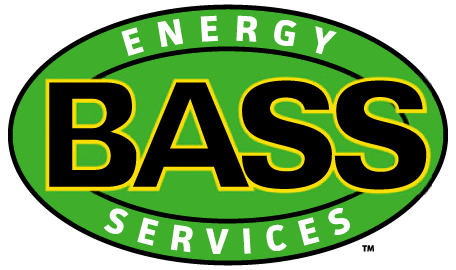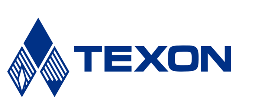In an increasingly volatile economy, industries are looking for novel ways to become more resilient to market dynamics. The Oil and Gas sector, in particular, is leading the charge in finding a suitable solution for sustainable growth and productivity. Today, companies have a better understanding of risk and factors impeding continuous production. Much of these factors are associated with the incessant market volatility and global economic slowdown. However, if there is another area that the energy sector has overlooked or missed capitalizing on quickly enough, it’s technology.
Today, smart technology has proven to be a game changer in every industry. The kind of definite metrics generated by applying technology to processes naturally dictate a company’s next move.
Optimization Techniques in the Energy Sector
Automating specific processes within the Oil and Gas sector brings a lot of visibility and measured approaches to production and management. Digitization of standard operations provides businesses with a lever to manipulate and control processes better, a necessity in crunch situations.
The trouble with traditional workflow management is that businesses fail to recognize specific functions along the process chain that are redundant and could be discarded as part of a company’s cost cutting measures.
Workflow automation gives management the insight into those functions along the process chain that are mission critical and impact the overall working of the system. It is the mission critical functions that need to be optimized for cost-effective production and growth.
Economic uncertainty is pushing organizations to make changes that can future-proof them in the long-run and intelligent automation is quickly becoming a major part of that change.
Why Digitize this Industry?
The Oil & Gas industry has seen a gradual slump in revenues over the past several years, partly due to lack of an export market and the subsequent drop in oil prices. The ensuing pandemic has only compounded their struggle in attaining sustainable levels of profits and ensuring continued business.
To survive in a restrained marketplace, organizations need to become agile. Low cash reserves due to lack of access to global markets is making it difficult for management to meet capital expenditures.
The aftereffects of the pandemic are expected to carry over well into the next decade, and those that survive would have done two things:
- Eliminated redundancy & tamed their operations to support only the most essential ones (and)
- Consistently optimized processes for better cash flows.
Organizations need to work towards setting up a sustainable business model - the key to continued operations is to reduce operational expenses, improve performance, and enable connectivity between the two ends of the commerce chain - suppliers and buyers.
Streamlining process chains and ensuring visibility and control across workflows will help management keep tabs on the running costs of operations. Optimizing mission critical processes across departments will help eliminate the usual bottlenecks and reduce cycle times to get the results out with reduced expenditures, improving cash flows and savings.
Workflow optimizations will also reduce manpower needs considerably, as this boiler equipment manufacturer found out. A critical player in the Energy sector, they couldn’t afford to continue with the same outdated system of managing vendor invoices and supplier relations without spending countless hours, money, and resources on just handling paper.
The company also lacked grip over its supplier base, failing to capitalize on any pricing concessions or early payment discounts. What they were looking for was an automated system of managing their Accounts Payable that improved cash flows and made their procure-to-pay operations agile. They sought Artsyl’s Intelligent Process Automation technology to transform their AP/AR and the result is a streamlined P2P solution that is helping them achieve not just heightened productivity at reduced cycle times but also a definite source of savings and improved cash flows.
Going back to what will keep companies in the market in the long-run, we need to review what processes can be optimized to improve cash flows and lower operational overheads. The Digital Worker, embedded with AI and Machine Learning technologies, has the capability to take over much of the labor-and-data intensive processes across departments, optimizing a lot of routine operations and lowering costs along the way.
The Oil & Gas industry is in an ideal position to capitalize on these Industry 4.0 technologies to modernize operations from the well head to the petrol pumps.
Tech Trends that Optimize Processes and Improve Operational Efficiencies:
Data-driven Insights with AI and Machine Learning
Data is at the core of business transformation and adoption of optimization techniques in the Oil & Gas industry. Intelligent Process Automation of routine workflows in this sector helps gather large amounts of data from third parties such as vendors and suppliers for statistical analysis and inference. Examples would be invoice processing software and order processing software that utilize intelligent data capture technology along with AI, Machine Learning, RPA, and BPA to automatically extract, process, and deliver verified data from vendor invoices and sales orders straight to an ERP, accounting software, or other host systems.
Oil and gas pipelines, refineries, wells, etc. digitized with AI and Machine Learning capabilities allows for intelligent data capture and processing from the well head to the petrol pumps. This data can be authenticated, analyzed, and manipulated for optimum process outcomes.
Continuous Monitoring with Embedded Systems
Sensors, transducers, amplifiers etc. embedded into buoys, pipelines, mining equipment, refineries, and oil wells can detect and extract large amounts of data on temperature, pressure etc. enabling monitoring for better well pressure control; checking of pressurized tools, drilling measurements, etc. The plethora of raw data unearthed and processed using an intelligent process automation tool that is then fed to a suitable analytical solution gives insights on the state of the oil reserves and drilling equipment, aiding in informed decision-making.
Drone Technology
Drones are fast becoming the best way to get aerial imagery across vast expanses of oil fields and reservoirs for better monitoring and visibility. Fitting drones with sensors and connecting them to the internet allows for continuous real-time monitoring and surveillance of the drilling landscape, enabling management to take better safety measures.
Humanoid Robotics
Given the risks associated with offshore drilling, oil corporations are today considering replacing workers with humanoid robots that employ cognitive technologies to emulate human actions. Again, embedded technologies within these robots make it possible for these androids to be receptive to external stimuli like a human would and send alert signals in case of impending risks or anomalies.
3D Printing
Although a relatively new application in the Oil & Gas sector, 3D printing of critical parts and equipment consistent with industry design and safety standards meet the sourcing needs for even minor, customized parts, elevating production control standards and operational continuity considerably.
Digital Twins
Simulation of ground-level operations at an oil rig using a digital twin that incorporates all of the human actions and knowledge of a roughneck or a driller allows for accurate and safe operations.
Given the immense capabilities intelligent automation and digital transformation of disparate processes at an oil rig opens up, in terms of the elevated efficiencies and safety standards, not to mention the immense cost savings from sound ground-level operations, one needs to only plan for budgeting for a sustainable future.
Need help getting onboard with your digital transformation plans? You could start by looking at your mission critical processes - the first step towards putting in place sustainable working models across the Oil & Gas sector that lower costs and increase revenues.






